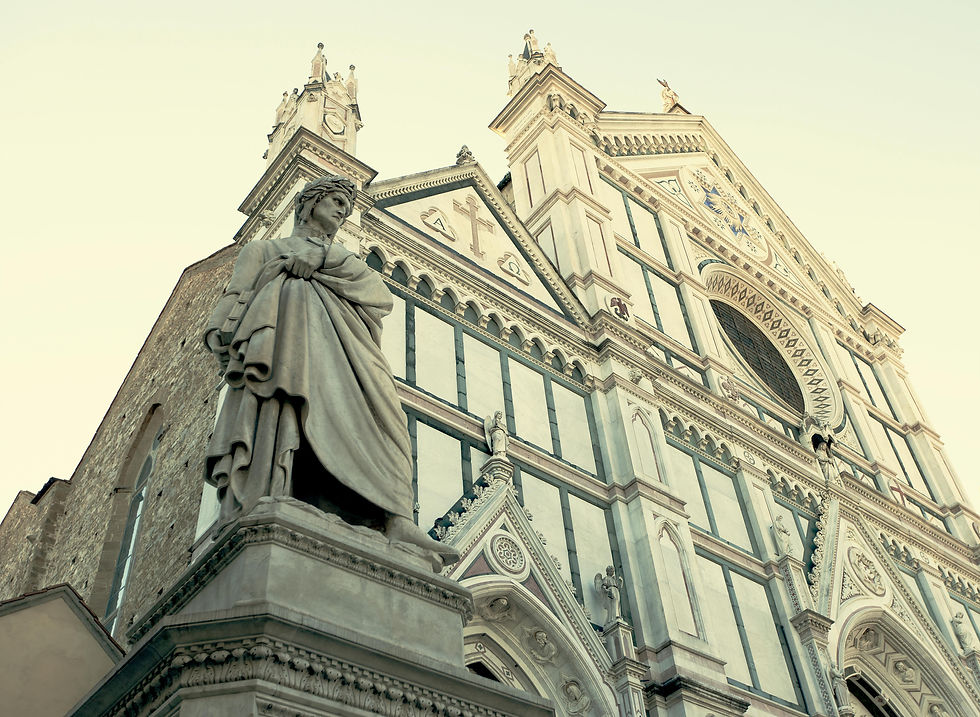Dante’s Medieval Fig Dispute
- infoflorencetours
- Sep 7
- 2 min read

Introduction
When we think of Dante Alighieri, we imagine fiery verses, political battles, and eternal poetry. Yet, history sometimes reveals a more human side to great figures. One curious episode tells us of Dante’s Medieval Fig Dispute, an almost comical quarrel that shows how even Florence’s greatest poet could be caught up in everyday matters.
Florence Before the Renaissance
Long before Florence became the city of fashion boutiques and endless selfies on the Ponte Vecchio, it was a labyrinth of narrow alleys, convents, and gardens. Among these stood the church of San Martino al Vescovo, where a surprising argument once unfolded.
According to historian Professor Silvano Fei, a researcher of curious Dante-related anecdotes, a heated dispute broke out between the Alighieri family and the parish priest. The unusual cause? A fig tree whose rebellious branches threatened to damage the church’s fence.
Here begins the story of Dante’s Medieval Fig Dispute, where poetry and daily life meet under the shadow of a fig.
Dante and His Temperament
We already know Dante was passionate: torn between the rival factions of Guelphs and Ghibellines, never shying away from controversy, and always ready to defend his ideals. But imagining him arguing about a fig tree gives us a very different picture—one that could almost deserve a humorous fresco on its own.
Thus, Dante’s Medieval Fig Dispute reminds us that even the most extraordinary men dealt with the most ordinary problems.
A Glimpse into Medieval Florence
The quarrel also confirms that the Alighieri family home stood near today’s Casa di Dante Museum, a restored landmark that welcomes curious visitors. Old maps even prove that the church of San Martino al Vescovo had a garden—an unexpected patch of green in the heart of medieval Florence. Today, only a stone wall at the corner known as “Canto alla Quarquonia” recalls that once-thriving garden.
In this way, Dante’s Medieval Fig Dispute not only entertains us with a quirky story but also deepens our understanding of Florence’s urban landscape in the Middle Ages.
Lessons from a Fig Tree
So, what can we take from this anecdote? That history is not only written in grand battles, masterpieces, or immortal verses. Sometimes, it sprouts in the shade of a fig tree too stubborn to be ignored.
Even great poets, after all, had their “dead branches” to prune. And thanks to stories like this one, we see Dante not only as a towering literary genius but also as a Florentine citizen engaged in everyday disputes.
For more insights into the world that shaped him, one can also explore Santa Croce Basilica, where Dante is honored with a cenotaph, or wander the alleys near Casa Dante to breathe the same medieval atmosphere he once knew.
Conclusion
In the end, Dante’s Medieval Fig Dispute offers a refreshing reminder: even the greatest minds of history lived among the small dramas of daily life. And sometimes, the story of a simple tree can reveal as much about a city as its grandest monuments.




Comments